#vodou music
Text
316: Toto Bissainthe // Chante Haïti

Chante Haïti
Toto Bissainthe
1977, Arion
“These songs are mostly slave songs taken from the Vodou cult. They speak of the quotidian, of the suffering of exile, and the desire of Africa, not as a geographical place but as a mythical land of freedom. They express their resistance and their refusal: resistance to the colonizer, refusal of his politics, of his religion, of his culture, of his language.”
So begins Toto Bissainthe’s statement on the rear of Chante Haïti, her 1977 collaboration with a small combo of Antillean folk and French jazz musicians: vocalists Marie-Claude Benoît and Mariann Mathéus; percussionists Akonio Dolo and Mino Cinélu (Miles Davis, Weather Report, Gong); Patrice Cinélu on acoustic guitar; and Beb Guérin on the double bass. The songs indeed fuse the Vodou ritual of her native Haiti with the European avant garde sounds of her adopted milieu of Paris, where she had moved to pursue acting and found herself a de facto exile due to the political situation back home. Bissainthe had become a prominent figure in the French theatre, performing in new plays by Beckett and Genet and co-founding Les Griots, France’s first Black theatre company; by the late ‘70s, she was an acclaimed recording artist to boot. Her accomplishments made her a prominent figure in the Haitian diaspora and her activist streak is apparent throughout Chante Haïti, explicitly linking the grief and yearning for liberation in these traditional ceremonials with the country’s contemporary struggles.
Like many songs on the album, the Creole words of opener “Soley danmbalab” mourn the people's estrangement from Mother Africa, a crossing which can neither be reversed or repeated. It begins like a field recording, Bissainthe’s soulful, Miriam Makeba-esque voice set to a chorus of rattles and bells and gurgling masculine whispers. As the song develops, her melody wends like a stream through the dense jungle of percussion, dissonant bass, and counterpoint chanting. Eventually, Mino Cinélu’s arrangement becomes more free, the male chorus imploring the Oungan (a male Vodou priest) to intercede with the creator on the people’s behalf as the tune breaks down into an increasingly abstract bass and drum interplay, while the three female singers exchange birdlike vocal improvisations.
youtube
“Ibo Ogoun (Variations)” is even wilder, evoking a trance ritual, the spirits speaking in many tongues through the celebrants as they seek to summon Ogun, God of Iron and War, to lead the battle of liberation. One of the male percussionists times his tanbou beat so that it hits just as he sings certain notes, creating the illusion that he voice has suddenly lurched down an octave for a moment, almost like a DJ freaking a vocal sample. Bissainthe, Mathéus, and Benoît match the intense drumming with some crazy syncopations, sometimes talking, sometimes hissing and whispering, sometimes wailing and ululating.
Most of the album takes on a more meditative tact, anchored by Guérin’s plangent double bass. On the smoky “Papadanbalab,” an entreaty to the serpent creator Damballa to bear witness to the penury of his people, Bissainthe sways over a slinky jazz bass line, Patrice Cinélu adding mellow acoustic fusion licks. The song seems like a brief stopover in a Parisian club. But even the less overtly intense tracks pack plenty of musical interest. “Lamize pa dous” has this hypnotic rhythm that sounds exactly like a micro house beat—in fact, the first thing it made me think of was Ricardo Villalobos’ Alcachofa, or Animal Collective at their campfire ravingest. The song is about the moment of surrender to death, the winnowing of time represented by water encroaching on all sides, the realization too late that “we spend our lives trying to fill the sea with stones.”
Listening to a record like this, especially in light of Bissainthe’s note on the back excoriating the colonialist ethnographer who reduces Haitian folklore to “excitement and violence,” requires at least a smidgen of awareness from the white listener that Chante Haïti is not intended for them. The traditions it engages with are of deep spiritual significance to many Haitians, both in the ‘70s and today. But for those inside and outside the culture who are willing to approach it with respect, Chante Haïti is a fascinating fusion of Antillean and European musics, and a peek into a profound and secret history.
youtube
316/365
#toto bissainthe#haiti#haitian music#vodou#haitian vodou#vodou music#diaspora#spiritual jazz#Kréyol djaz#creole#'70s music#female singer#female musicians#protest music#music review#vinyl record
5 notes
·
View notes
Text
Chouk Bwa & The Ångstromers& The Ångstromers - Somanti
Haitian six-piece Chouk Bwa meets Belgian production duo, The Ångströmers. Afro-Caribbean voodoo polyrhythms meet bass-weight dub electronics.
After the acclaimed Vodou Alé released in 2020 and two 12’’ in 2022, Chouk Bwa & The Ångströmers strike back with Somanti, a brand-new album that digs again into Haïtian vodou and electronic experimentations. Brutally separated by the COVID crisis, the band went back on stage in 2022 and performed about thirty concerts in Europe. Between two concert series, they took the opportunity to record their live set. The connection between the well-preserved vodou tradition on one hand, and analog electronics on the other hand, gets deeper and deeper, with also a kind of rage due to the incredible difficulty of the world. The musical result is wild and full of twists and blasts. It’s in-your-face.
18 notes
·
View notes
Text
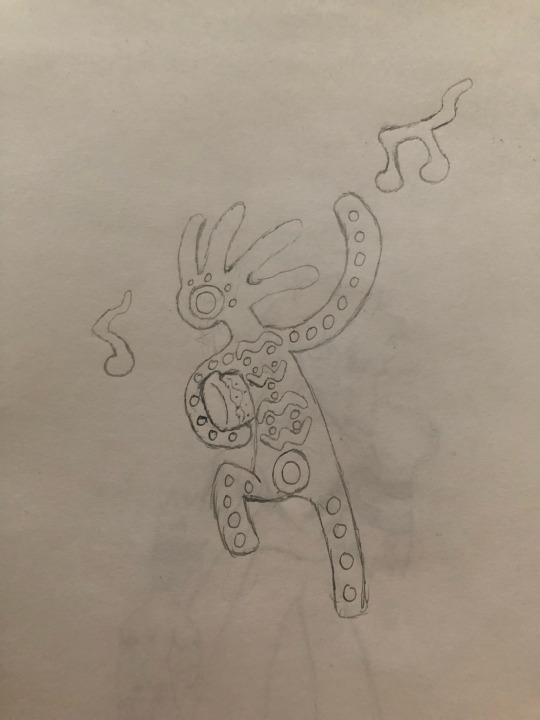
Joyboy, the Vodou spirit of hope and music, whoever hears the beat of his drum cannot resist the temptation to dance and laugh their worries away.
8 notes
·
View notes
Quote
The first musician to bring pop-Voodoo imagery to the stage was Screamin' Jay Hawkins, who would rise from a coffin onstage with a bone in his nose. Hawkins had intended for his hit record "I Put A Spell On You" to be a soulful ballad. But once the producer "brought in ribs and chicken and got everybody drunk, we came out with this weird version," Hawkins admitted, adding "I found out I could do more destroying a song and screaming it to death." Hawkins kicked off the undead craze among rockers like Alice Cooper and Marilyn Manson.
Meanwhile, despite the severe repression, Vodun practices crept into Southern black churches. Descriptions of black Baptist church services in the late 1800s and early 1900s depict the congregation dancing in a circle in a "rock" or "ring shout" as they follow the deacon, who bears a standard.
It was the deacon's job to whip parishioners into a frenzy of fainting and speaking in tongues called "rocking the church." The concept of a deity "riding" with a worshiper transferred to these Christian churches, where the cry "Drop down chariot and let me ride!" was often heard, as well as "Ride on!" and "Ride on, King Jesus!" This became the solidarity shout, "Right on!"
Blues singers fronting big bands, like Joe Turner and Jimmy Rushing, copied the way church solo singers belted over the choir. The radio beamed this new "shouting blues" all over black America. It was picked up by country blues singers like Muddy Waters and T-Bone Walker, who had moved to Chicago and used it with their new electrified bands. These, in turn, inspired rockers like Janis Joplin, Jimi Hendrix, The Beatles and The Rolling Stones
Africans brought here as slaves carried with them incredibly strong aesthetic, ethical and cultural values that not only withstood the shock of their forced transplantation to the New World, but transformed and invigorated it. Their influence made us uniquely American. It's why we respond to that Voodoo beat.
Possessed: Voodoo's Origins and Influence from the Blues to Britney
12 notes
·
View notes
Text
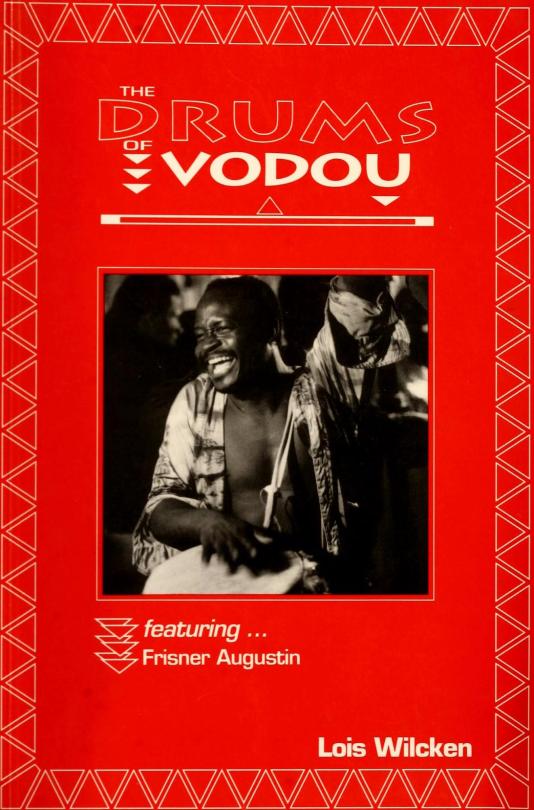
#black dark academia#poc academia#black books#Drums of Vodou#Black Spirituality#african spirituality#books#book covers#music#drumming#drummers#percussion
8 notes
·
View notes
Video
youtube
BOKOR AND CAPLATA | EXE 0225 | GLAUFX GARLAND | WITCHHOUSE | DARKWAVE | ...
#youtube#witchhouse#darkwave#electroindustrial#industrialmusic#industrial#darktechno#darkelectro#electro#eectronicmusic#music#electronica#vodou#bokor#caplata
7 notes
·
View notes
Text
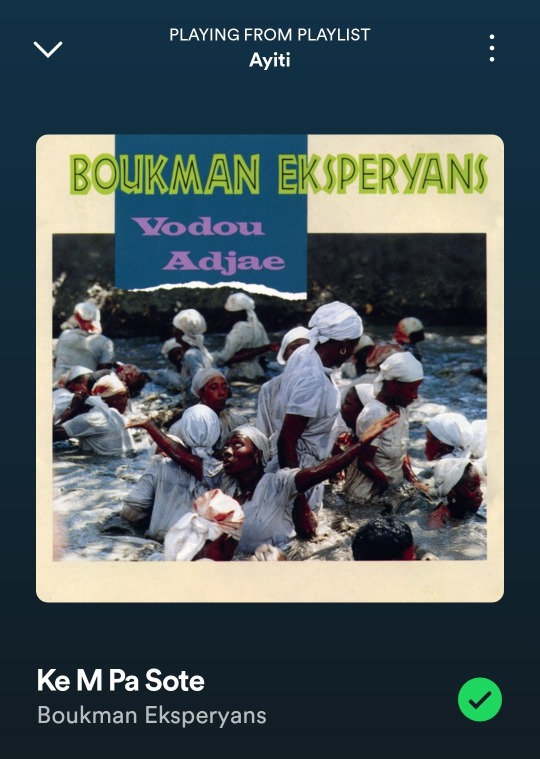
0 notes
Text
@sangcreole
1 note
·
View note
Text
Ches Smith Explores Haitian Vodou Music with We All Break - JazzTimes
1 note
·
View note
Text
On January 7th, we venerate Ancestor & Hoodoo Saint, Auntie Zora Neale Hurston on her 133rd birthday (updated 2024). 🎉
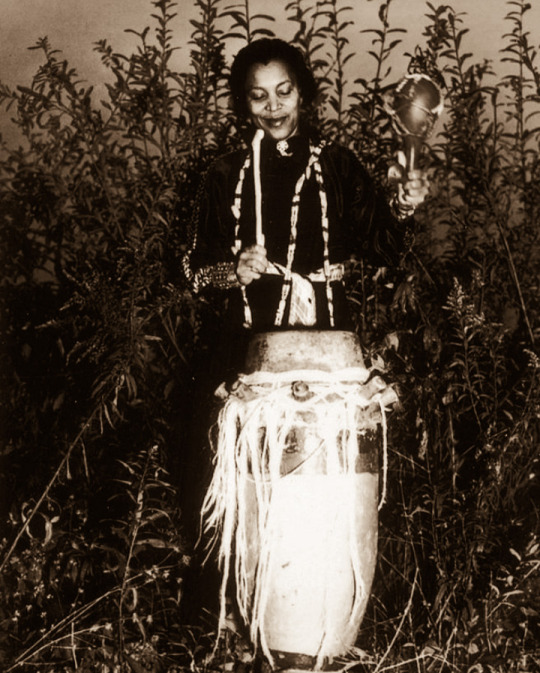
Novelist, Anthropologist, Folklorist, Scholar, Vodou initiate & Historian, Zora Neale Hurston's legacy is forever cemented in Hoodoo Culture (and beyond) as the masterful wordsmith who cast a shining light on black excellence in all everyday forms/spaces, our ATR roots, & the preservation of Black Voices during the prime of the Harlem Renaissance.
Auntie Zora was born in Notasulga, AL and raised on 5 acres of land in Eatonville, FL by her preacher-father and free-spirited mother ; in what would be the first all-Black township in the country. After the shattering loss of her mother, Zora turned up in Baltimore, MD where she presented herself as a 16 year old (10 years her junior) in order to access free public school education resources; thereby finishing school. From then on, Zora lived her life presenting herself as 10 years younger than she actually was. She'd go on to graduate from Barnard College in 1928.
She published several novellas & articles, including "Mules & Men"; a collection of Hoodoo Folklore. She entered the zenith of her career in the late 30s/40s after publishing her masterworks: "Their Eyes Were Watching God", "Tell My Horse", "Moses, Man of the Mountain", & an anthropological study on Hatian Vodou .After publishing her autobiography, "Dust Tracks on a Road, "Auntie Zora finally received the public recognition & literary respect that was long overdue. Despite her successes, and unprecedented contributions in classic literature & anthropology, Zora never received the financial contributions that her work so deserved.
Zora Neale Hurston passed away; penniless, alone, & drifting into obscurity. Friends and supporters from near and far raised $600 for her funeral service and burial. She was buried in an unmarked grave, in a segregated section, at the Garden Of Heavenly Peace Cemetery in Fort Pierce, FL. Over a decade later, in 1973 the Great Alice Walker found the unmarked grave and ordered a headstone to be placed on it; engraved with, "Genius Of The South" in Zora's honor. It remains in place today.
“Let no Negro celebrity, no matter what financial condition they might be in at death, lie in inconspicuous forgetfulness. We must assume the responsibility of their graves being known and honored.” - Zora Neale Hurston to W.E.B. Dubois
Auntie Zora wanted to be remembered & demanded that the same honor and respect be given unto her peers & others. Never forget the infectious voice that defined & defied, inspired & struck fear in many hearts of her time & after.
We pour libations & give 💐 today as we celebrate Auntie Zora for her enigmatic spirit, ancestral wisdom, labor of love for Hoodoo Folklore, & for the seeing the beauty in the dark, sometimes solemn, corners in Black Culture. Let her studies continue to inform our own. Let her spark a fire in us to reconnect to our roots & grow within our lineages.
Offering suggestions: money, music, read/share her work, libations of water, & flowers.
‼️Note: offering suggestions are just that & strictly for veneration purposes only. Never attempt to conjure up any spirit or entity without proper divination/Mediumship counsel.‼️
#hoodoo Saints#Hoodoo Saint#zora neale hurston#Hoodoo#vodou#haitian vodou#the hoodoo calendar#hoodoohistory#hoodoos#atrs#atr#hoodoo culture#bvm#Hoodoo Folklore#Black authors#Black writers#own voices#Black Power
691 notes
·
View notes
Note
Hii ik saw me many times but i love your blog so much about hobie and Miguel i have questions have any hc hobie being west African hc of that been there since watched movie i cannot get it out
I AM GOING TO SCREAMMMMMMMMMMMMMMM AT THIS BECAUSE YES YES I CAN
(also sorry if this is kinda Yoruba centric!! cause that's the area I know the best - for reference I myself am Bajan/Quechua (West Indies - Barbados / Indigenous Peruvian))
West African!Hobie Headcanons:
And because I'll never get a chance to talk about this again I'm gonna start off with the one I love most and the one people know most about (and that is demonized - literally - the most)
Hobie and Vodou (aka VooDoo):

Yeah, I said it. Hobie can work. He got juju. He rootworks. He conjures. Whatever iteration, whatever title - if Hobie followed any religion it would either be Buddhism, which some argue that some sects can double as a moral philosophy,
-If he'd respect any religion. It'd be a Traditional African one and I'm putting money on Vodou.
[And heads up, I am not an initiate of Vodou, but I do actively practice African Traditional Spirituality (HooDoo/Rootworking) and Ancestral Worship. So take from that what you will.]
First of all - how punk would that be??? A West African religion demonized by the western world for centuries from Africa to Haiti to Louisiana - that praised ancestral worship and community first???
YES PLEASE. Some people might not really understand all of this but:
First things first, yes, he speaks Yoruba and if you call it 'Speaking African' he's going to flay you alive.
Like????? Hobie sweet talking in Yoruba??? I'll throw my self on the floor right now!!
Hobie practicing ancestor worship - and thanking all the oppressed people who gave their lives and suffered daily so he can live his life?
He'd have an altar in his house, a small one he keeps out of sight, even to Gwen.
Leaves offerings and bits of his meal on the altar. Cause he was once food insecure, but now that things are a little better, he can do that
Like even if he practiced a form of HooDoo or another sect that derives from Traditional African Spirituality (that doesn't involve initiation)
He'd want to give back to his ancestors, learn how to use natural herbs and work them, learning how to make powders, doing floor washes, sweeping a certain way
And having all of these routines related to his African spirituality that are so subtle but he thinks about always
Prays to his ancestors to give him strength when he's struggling with being Spiderpunk
BUT IMAGINE IF HE WAS INTITATED THO ????
Hobie in all white during ceremony???????
HOBIE BEING A CHILD OF SHANGO??????????

NAH THEY AINT READY FOR IT
But even so -whatever Orisha got that boy head be putting in WORK.
And you know he keeps his beads on forever and always even under the suit!!!!
And the style!!! Hobie AfroPunk?!!!
I don't know if they have this elsewhere, but in NYC there's a music festival called AfroPunk - and it's full of black artists, and black people come out in these amazing outfits - and the goal is to incorporate as much African influence as possible
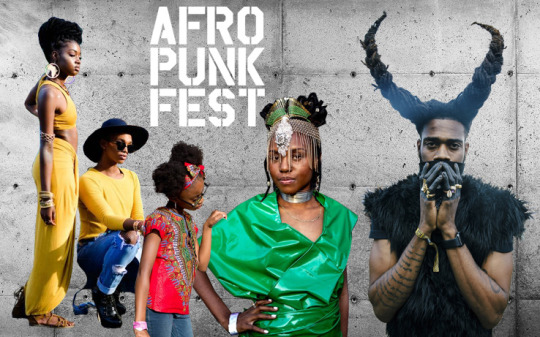
HOBIE WOULD EAT THIS UP.
The inside of his vest being lined with African textile!!
He takes it off in front of you and you see that little pop of that of classic orange-gold color

You just know he's wit it!!!
And the BEADS
(He should wear beads he's royalty compared to the raggedys at HQ)
[Cough] red and white shango beads [Cough]
Imagine Hobie giving his girlfriend a coral bead bracelet too AWWW
And telling them the significance??!!
He loves a woman in a headwrap. GELE ESPECIALLY but any type
And if you wear waistbeads UMMMMMMMM
As soon as he sees it peeking from under your shirt - IT'S GAME OVER
He's gonna wanna test if they working how they supposed to IF YOU KNOW YOU KNOW.
AND The FOOD!
First of all - Hobie hates that British manners shit.
Was raised eating with his hands and loves it
He hates old white people who wanna stare cause he eats with his hands
He loves goat. Not me projecting he LOVES goat.
He really appreciates rice based dishes because they can fill you up - and you can't just buy them anywhere
Prefers Waakye to Jollof Rice but still loves Jollof
With FUCK UP some Fufu if he can get it
I say he eats standing up so he's just there at his kitchen counter eating Fufu and the most random shit in his fridge???
Like he'll be eating left over KFC with fufu - like what are you doing??? Thats - not a meal bro
He loves Okra (ew nasty ass) and he'll eat it all the time.
Especially fried okra but okra soup is cool too he's fine with that
His fried plantains go INSANE. They go SO HARD. They're to die for
He always picks the sweetest ones and it cooks them till they're all caramelized and shit YUMMMMM
(can you tell I like my plaintains sweet and soft cause I DO)
Extra Headcanons
He was not playing that when Gwen first came over - as soon as she stepped on the houseboat with shoes he was like "Girl-"
The first time Peter B. heard him speaking Yoruba he went "Wow, Hobie, Your Nigerian is great!"
Hobie, who already hates Peter B, looked at him like he was the dumbest mfer on earth like
'Right, and you speak American, right? Fucking bellend. I hate you. 'Nigerian'. It's Yoruba.'
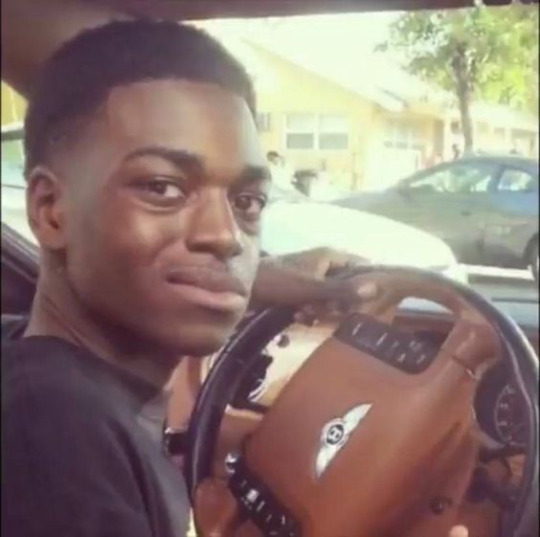
(He's only saying that cause he hates Peter personally and wants him to have a bad day)
Meanwhile Gwen was nice enough to just ask "What language is that?" (The correct way to do it, do not assume language names like Peter)
First time he went over to Peter B.'s place (on Gwen's insistence), Mary-Jane accidentally swept over his feet before setting her purse on the floor
and in the moment he knew he had to leave.
He's a streetkid, but since he's in the neighborhood so much he has like 45 different women he calls auntie - and they make sure he has good food to eat because 'you are so skinny! you need to eat more.'
He does that auntie shit where you're walking with him and you see someone you know and now they're in a long ass conversation
Or when he says 'goodbye' then stands by the door having a conversation and you're standing there in your coat like....'fam are we out or not cause i can sit back down'.
He always goes to meet the elders of whatever house he's in to introduce himself, very respectful of black elders and enjoys helping old the older black folk in his neighborhood.
He enjoys giving them respect and hearing their stories, helping around the house. Plus he gets great food out of it
ANNDD That's all of them I think!!
Sorry if any of these were off the mark - a lot of these are from personal things I know about West Africa and things learned through Spirituality. I hope I got everything okay!
Thanks for this by the way I LOVE Hobie and culture you know he'd be SO proud!!
[If you've read this far - maybe take some time out to learn a bit about African religions - they're beautiful practices (open to black people - we're worshipping black ancestors) - but you can still learn about them and understand how modern culture often demonizes these types of religions. If anything, I hope you learned a little from this! Hoodoo, Vodun (VooDoo), and Santeria (Latino witchcraft) are not scary, dark practices!]
And because I spoke about spirituality, imma put this here cause DO not be playing yknowwhatimean
🧿
#I love talking about African Spirituality I hope I did it alright and justice#Most Vodou practitioners I know are Haitan so excuse any differences#no proofread as usu#hobie brown#hobie brown headcanons#spider punk#spiderpunk#across the spiderverse#atsv#across the spider verse
138 notes
·
View notes
Note
Hazbin Hotel is proof you will throw out your problems with racism and SA kinks because UwU lesbians.
My critique isn't even out yet, you blithering idiot. What are you so bitchy about? That I didn't just take the words of drama mongers as gospel?
You know, I looked into that thing about that one episode supposedly glorifying and fetishising sexual assault (side note: Actually write Sexual Assault, you coward) and you know what I discovered?
Nothing.
The "glorifying" didn't exist. What I found was an entire musical number where Angel yammers on about how he's addicted to his own abuse, which promptly ends with the reminder, for the 6th time, that he's lying to himself.
The people who claimed that was "glorifying" were out of their fucking mind, and have the reading comprehension of a blind golden retriever two days after a stroke.
As for the racism, I already posted a script segment where I chastised (lol) the show for it's appropriation of Vodou.
So kindly fuck off, go learn to read, stop stealing your mother's tablet.
41 notes
·
View notes
Text
Why Was Alastor A Serial Killer?
I'm willing to bet that Hazbin Hotel is trying to avoid the true crime route of portraying serial killers with gritty 'realism'. Characters kill for theatrical reasons, not because the creative team is doing a deep dive into criminal minds.
I foresee Alastor's serial killer spree to be plot-spurred. Not because he's gonna be revealed to have antisocial personality disorder, or a psychopath, or something polarizing like that.
Realistically, any of the current Hazbin Hotel cast could have a personality disorder. Real-life serial killers aren't profiled (by USA FBI) to be more likely to have mental illnesses. After all, there are other serial killers than the ones you hear about most often. Serial killers are also the organized criminals, or abusive husbands, or political/religious extremists. They may or may not view their victims as fellow individual humans. They may or may not be influenced by bigotry.
Hazbin Hotel is a musical comedy first and foremost. It follows Loony Toons rules over Hannibal, or The Cell, or Silent Hill. It's possible that Alastor's serial killer past won't ever be a plot point. It's as relevant as any other character's reason for being in hell.
If his serial killer spree is ever addressed, I theorize it might be because:
They were magical sacrifices. Alastor's magical abilities take heavy hits from Hollywood 'voodoo'. One of the smear accusations against New Orleans' budding Vodou culture (especially against Marie Laveau of the Victorian era) were sacrificial rituals performed in areas like on the shores of Lake Pontchartrain. If Alastor was dabbling in magic during his living years, he might have killed and cannibalized solely for sacrificial reasons. Possibly involving his supposed 'deal', as well.
They were 'vigilante' targets. The lyrics in the pilot include the lines And we'll chlorinate this cesspool / With some old redemption flair. He values good manners. He doesn't believe in taking advantage of the weaker. One background concern of the Hazbin Hotel (and Helluva Boss) universe is the sheer number of humans who end up in hell, all equal in their sin. Like the angelic exorcists that descend to cull the herd, it'd be appropriate for a character to have a hand in playing a similar role whilst mortal. Or, at least, that's how he saw himself.
It wasn't spur killing, all the victims were connected. We've never had a full plot centered on why a soul ended up in hell. Canonical reasons have been revealed in side material, such as Angel Dust's organized crime and drug use. As the seasons continue, there may come a day where a character's mortal sins become very relevant. Many a protagonist has found themselves racking up a body count all of a sudden, thanks to his hero's journey. Perhaps that resulted in Alastor's notoriety.
Alastor was a living demon, and he consumed humans. His serial killing is one thing, cannibalizing his victims is another. He's obsessed with consumption and partaking in flesh. The pilot ends with his hunger for his mother's recipe. His side comic has him eating eggs at a cafe, then visiting Cannibal Town, then visiting a butcher to buy more food. He canonically dislikes sweets and is a snobby foodie that dislikes processed food. There's only three proper food scenes in season 1, and he's two of them - the deer, and when he eats other sinners in his monstrous form. If he made some sort of devilish deal while alive, perhaps the cost was the need for flesh. Thus gave rise to a human with inhuman bloodlust.
His reasons won't ever be revealed. Or, they'll be unimportant. We don't particularly care what gang Angel Dust ran with as a mafia grunt, and perhaps we're also meant to take Alastor's serial killing at face value. At of this writing, we poke and prod at the guy 'cause he's this huge mystery, but maybe we'll grow to care solely for his contemporary actions, and not for his backstory.
We may get our answer one day, but for now, he remains an enigma.
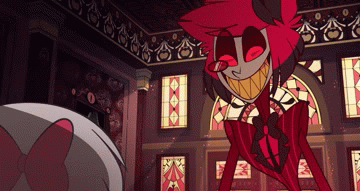
#alastor headcanons#alastor the radio demon#alastor#hazbin hotel#hazbin hotel headcanon#hazbin alastor
21 notes
·
View notes
Quote
The story is one that forms an allegorical mirror to the tale of the blues. When those suffering on plantations couldn’t speak, they had to learn to sing. This encrypted meaning and the humanised expression of the blues elucidated the vital necessity of music, both as a means of communication and as a soulful vessel to exultation. Buried within that subversive undercurrent was the monolithic force of Vodou. All the blues notions of devil’s at the crossroads, hoodoo’s and hexes are deeply linked to the ways of the old world and the Caribbean.
Off the Beaten Track: How West African Voodoo became the lifeblood of the blues
9 notes
·
View notes
Note
So i just watched the first two episodes of Hazbin Hotel, and wanted to know if you have any thoughts on how they potray Alastor? (Also just for information, is episode 4 the one were that one Angel and Valentino scene is shown? I'm not sure i'm gonna be able to watch it due to that so i just wanna be informed i apologize if it comes so out no where)
No worries. Alastor has no impact for me whatsoever, he doesn’t have a threatening aura at all, and when he gets enraged or threatening I’m like this: 😐
And yeah, they’re completely committing to the vodou bit no matter how racist it comes off and no matter how nicely fans have asked them to reconsider.
Yes episode 4 is when Angel leaves the hotel to go work for Val and that is when that whole scene happens. I actually think the decision to make the show a musical was a strange one, the heavy topics are handled decently when characters converse. The abuse isn’t shown to excess. But when they start singing all of that kinda goes out the window…I feel the same about most of the musical scenes.
18 notes
·
View notes
Photo
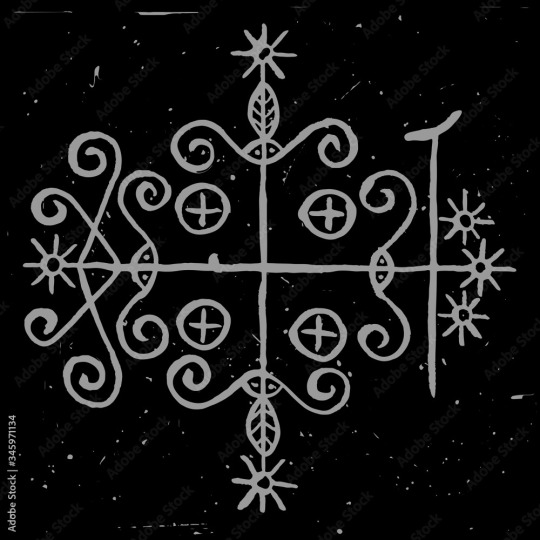

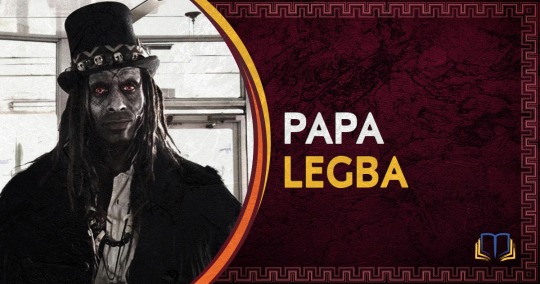
Does the Witch Doctor in Africa countries make Kabbalistic Pacts with the Devil like in Haitian Voodoo and Jamaican Obeah?
They most certainly do not make Kabbalistic Pacts with the Devil which is a Judeo Christian Islamic concept, which they were not, African priest and priestess doubled as healers both spiritual and physical , they understand there is a duality in nature as in the spiritual worlds one can tap into , eg Horus cannot exist without his polar opposite Set.
Now that said there are areas where both the Christian concepts became entwined with African religious concepts as in the cross roads and Papa Legba.
Because slave owners were worried about potential rebellion, they often separated enslaved people from the same area.
By mixing people from different regions and language groups, they could use the communication barrier to discourage or even prevent revolt. However, many of the deities were similar, and so enslaved people from different parts of Africa soon found commonalities in their spiritual beliefs and practices, which they were forced to keep hidden.
Papa Legba soon found a home in the religious structures of enslaved people in Haiti and the Caribbean, as well as in the American colonies. Author Denise Alvarado says Legba:
...stands at a spiritual crossroads and grants or denies permission to speak with the spirits of Guinee, and is believed to speak all human languages. He is always the first, and the last spirit invoked in any ceremony because his permission is needed for any communication between mortals and the loa—he opens and closes the doorway to the spirit world.
Over time, after African syncretic practices blended with Catholicism in the new world, Legba became associated with several saints, including Saint Peter, Saint Anthony, and Saint Lazarus.
In the Haitian religion of Vodou, Legba is seen as the intermediary between mortal men and the loa, or lwa. The loa are a group of spirits responsible for various aspects of daily life, and they are the children of a supreme creator, Bondye. They are divided into families, such as the Ghede and Ogou, and practitioners develop relationships with them through offerings, petitions, and prayers. Often, Papa Legba is the one who carries these prayers to the loa.
Note the cross roads would later become associated with the devil in this religious synchronism.
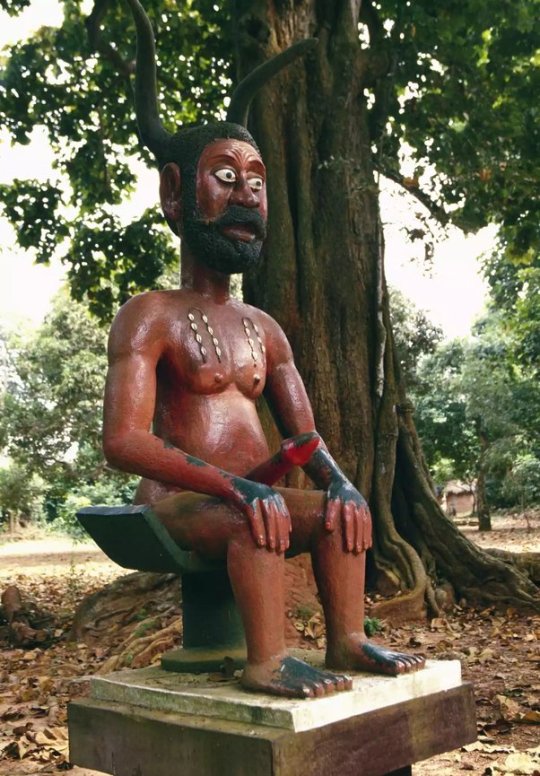
Statue of Legba as fertility god. Atlantide Phototravel / Getty Images Plus
Legba has evolved in numerous ways from his origins in Africa, where he is sometimes viewed as a fertility god or a trickster; he many be depicted as both male and female, sometimes with a large erect phallus. In other areas, he is a protector of children or a healer, and can grant forgiveness for crimes against others. Variants of Legba exist in many places including Brazil, Trinidad, and Cuba.
Papa Legba appears in many forms in New Orleans Voodoo and Haitian Vodou. He is typically depicted as an older man, sometimes wearing a straw hat or old tattered clothing, walking with a cane, and accompanied by a dog. He's associated with the colors black and red.
Legba is strongly associated with crossroads magic, and is referenced in a number of early twentieth-century blues tunes from the area of the Mississippi Delta. Famed bluesman Robert Johnson is said to have met a spirit at the crossroads, and offered him his soul in exchange for musical success. Although eventually the story was twisted to say Johnson met the Devil, musical folklorists believe that tale is rooted in racist ideology; instead, Johnson met Legba at the crossroads, where he had gone seeking guidance and wisdom.
Papa Legba is a master communicator, who is said to speak the languages of all human beings; he then translates petitions and delivers them to the loa. He is a teacher and warrior, but also a trickster deity. Legba is a remover of obstacles, and can be consulted to help find new, positive opportunities, thanks to his ability to open doors and new roads
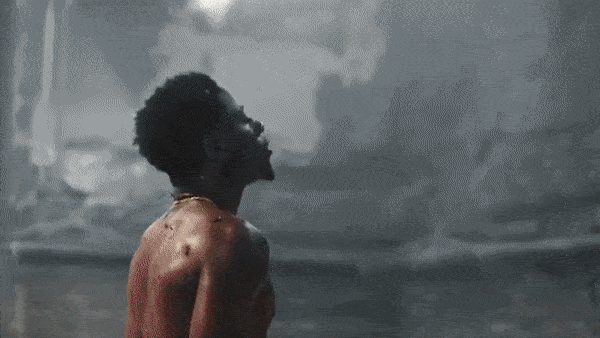
Legba represents a West African and Caribbean Voodoo god. This god has many different names depending on the region in which he is worshipped is most commonly known in Haiti as Papa Legba. Papa Legba serves as the guardian of the Poto Mitan--the center of power and support in the home. Additionally, he allows for communication between humans and the spirit world. According to West African Voodoo practices, spirits of the dead are not able to inhabit one's body unless permitted by Papa Legba. The symbol for Legba typically has a red background, one of his representative colors. The symbol includes several keys which signify Legba's control over communications and forms of passage, including locks, gates, and passageways;it also includes a cane, as Papa Legba is generally depicted as an old and feeble man in the Haitian religion. There are many chants to summon Papa Legba, one of which is: Papa Legba, Open the gate for me/Atibon Legba, Open the gate for me/Open the gate for me/Papa that I may pass/When I return I will thank the Lwa.
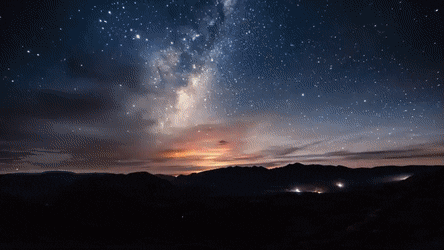
GYE NYAME - Supremacy of God
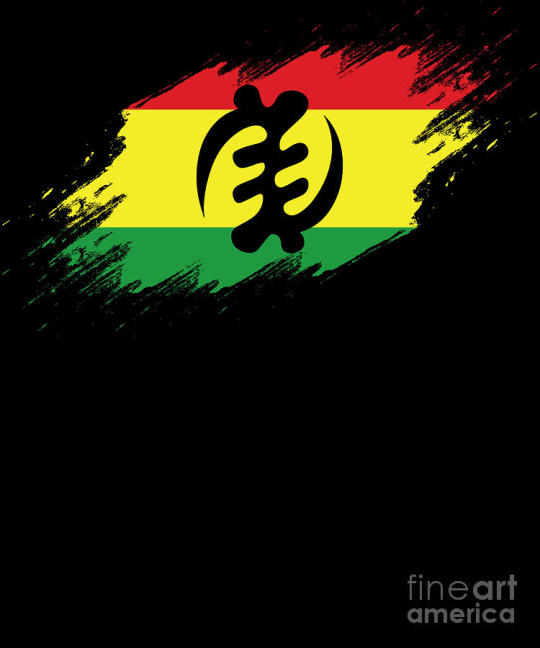
Gye Nyame, meaning “except for God,” symbolizes God’s omnipotence through the knowledge that people should not fear anything except for God. Another interpretation of “except for God” is that no one has seen the beginning of all creations, nor will anyone live to see the end, except for God. Gye Nyame indicates the recognition of the supremacy of God over all beings, and therefore is the one that is feared and revered by all. This is one of the many Adinkra symbols of West Africa, Ghana, and is used by the Akan people in various decorations, clothing, and artwork. Some say that the symbol represents a spiral galaxy, or two hands with different gestures that refer to God being supreme to the simplistic ideals of male and female identifications that are used today. The use of this symbol by the Akan people suggests that the Akan had a highly advanced writing language that transmitted religious and cultural concepts, and also might have had a somewhat extensive knowledge of astronomy, which shows their intellect and indicates that the Akan were a more advanced civilization.
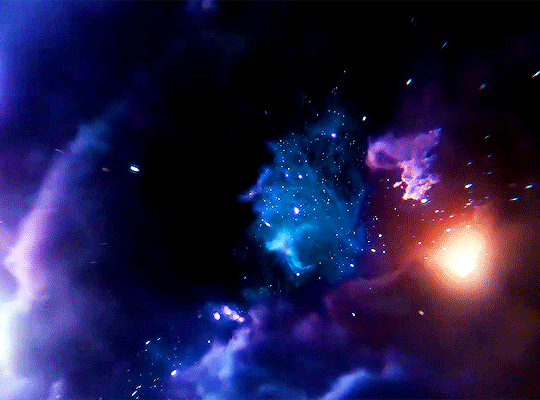

Nkisi Sarabanda, symbolizing the signature of the spirit, is a representation of a bakongo cosmogram. This symbol portrays how the Congo-angolan people viewed the interaction between the spiritual and material world, or in other words between the living and the dead;the Congo-angolan people believe that these worlds are inherently intertwined. An Nkisi is a spiritual object used for worship purposes, and have been found in places where enslaved Africans have lived in, such as in the plantation homes. Nkisis show the development of African American culture in how they are essentially African objects, but are constructed through American materials. This also reveals an aspect of the melting pot of African and American culture. Sarabanda just connotes "the highest spirit". Part of the symbol takes the form of a cross, because the Congolese had an inclination towards Christianity. Communication appears to take place at the center of the cross, where the worlds intersect, and it was believed that spirits sat at the center of the sign. The arrows represent the four winds of the universe, and the symbol as a whole resembles the form of a spiral galaxy;this indicates their interest in astronomy and affinity towards nature.

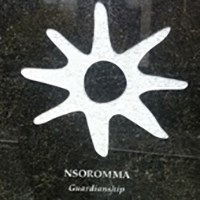
Nsoromma, meaning "children of the heavens" or "star," symbolizes the guardianship of God and how he watches over all beings. It is one of the many Adinkra symbols that the Ghanaian people have lived by. The protection of God is constant, like the stars in the universe. The stars also embody light, with the vision of light slicing through darkness as a savior, or protector. The symbol indicates the existence of the spiritual world, in which our ancestors and past families exist and watch over us, creating a feeling of safety and wholeness. Nsoromma expresses the message to live life to its fullest knowing that you are supported and strengthened by God.


Divinity of Mother Earth
Asase Ye Duru—literally meaning “the earth has no weight”—is a symbol that represents power, providence and divinity. The symbol is one of many adinkras, or depictions of important concepts created by the Akan peoples of Ghana. Asase Ye Duru emphasizes the importance of the Earth and its preservation. People must respect and nurture the Earth, and should never act in ways that might directly or indirectly harm the Earth. The significance of the Earth to the people of Ghana is evident in the following proverbs: Tumi nyina ne asase, meaning All power emanates from the earth; and Asase ye duru sen epo, meaning The earth is heavier than the sea. The African Burial Ground honors these principles, as it surrounds itself with natural resources and emphasizes the cohesion of death and nature.

#vodun#african traditional religions#panafrican thought#kemetic dreams#asase#duru#akan#earth#ghana#nso#nsoromma#children of the heavens#nkisi#nkisi sarabanda#bakongo#bakongo symbolism#gye#gye nyame#legba#new orleans voodoo#haitian vodou#brazil#trinidad#cuba#denise alvarado#obeah#kabbalistic#odinani#horus#set
140 notes
·
View notes